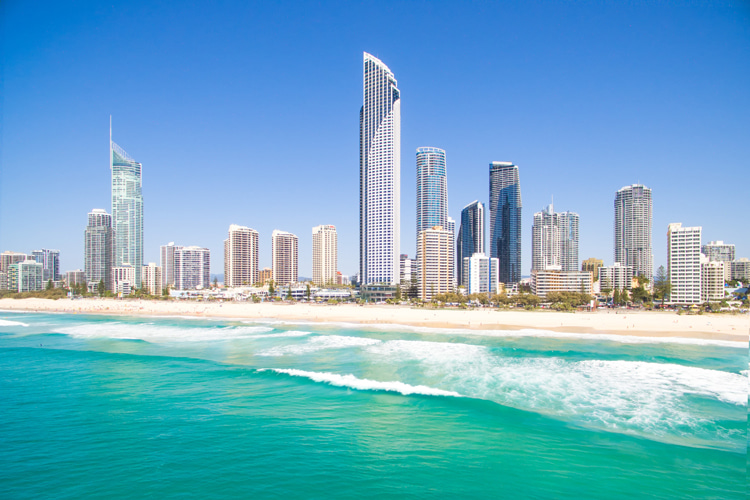It has one of the surfiest town names in the world. Surfers Paradise, the iconic coastal city in Queensland, Australia, is a top destination for tourists and surfers alike.
Known for its golden beaches, magnificent skyline, and vibrant nightlife, the seaside resort has become synonymous with the Australian beach culture.
But have you ever wondered about the origins of the name "Surfers Paradise"?
Let's dive into the history and stories that shaped the identity of this famous destination located just 18 miles (30 kilometers) north of Snapper Rocks.
Surfers Paradise's history dates back to the 19th century when it was known as Elston, a small farming community nestled between the Nerang River and the Pacific Ocean.
During this period, the coastal region was largely unpopulated and disconnected from Queensland's more established urban areas.
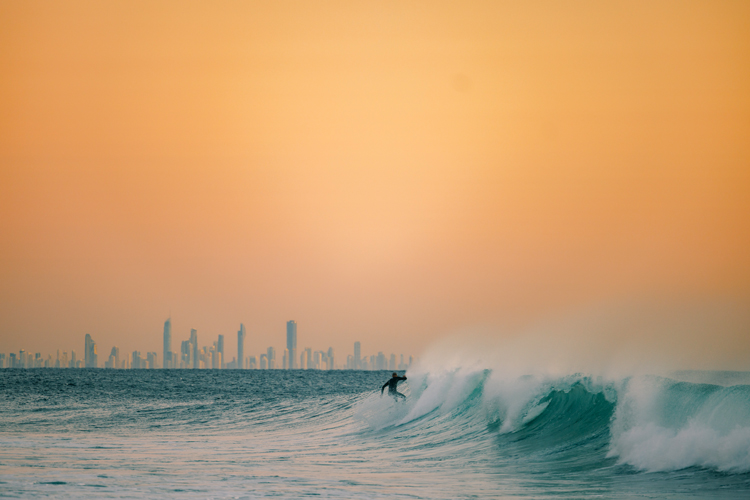
From Estate to Hotel
In 1917, Brisbane-based real estate firm Arthur Blackwood organized a land auction to sell subdivided plots in Elston under the name "Surfers' Paradise Estate."
The auction was unsuccessful due to the challenging accessibility of the area.
However, the event marked the earliest documented mention of the name Surfers Paradise.
With the construction of the Jubilee Bridge in 1925, which connected Southport and Elston, the region saw an influx of visitors and the beginning of a tourism boom.
Around this time, Jim Cavill, a hotelier and entrepreneur, sensed the potential of the area's pristine beaches and the region's perfect surf conditions.
In 1925, Cavill bought a parcel of land in Elston and built the 16-bedroom Surfers Paradise Hotel, which later became the city's namesake.
His vision was to create a haven for beach and surf enthusiasts, attracting people from all over Australia and beyond.
Cavill's intuition proved correct, as the region's popularity grew exponentially over the following decades.
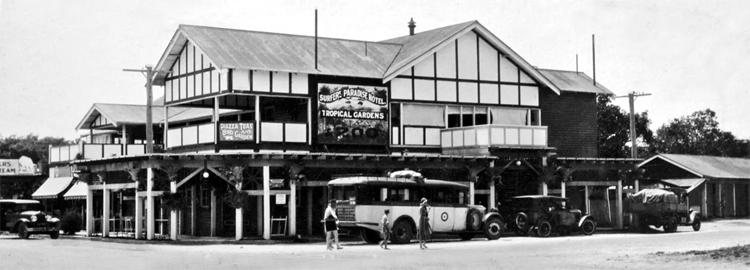
A Marketable Title
On December 1, 1933, the local council decided to rename the suburb to give it a more attractive and marketable title.
In July 1936, the legendary wooden hotel was engulfed in flames and completely destroyed.
The following year, it was reconstructed using bricks and reopened in September 1937, featuring telephones in each room.
Jim Cavill is also widely recognized for playing a pivotal role in founding the Surfers Paradise Surf Life Saving Club.
His Surfers Paradise Hotel became the epicenter of the growing community, and the area surrounding the hotel soon took on the same name.
And as the popularity of Surfers Paradise continued to grow, so did the need for infrastructure to accommodate the increasing number of visitors.
The Boom
The construction of the South Coast Road (now Gold Coast Highway) in 1930 and the opening of the South Coast railway line in 1936 connected Surfers Paradise with Brisbane and other major cities, further fueling the tourism boom.
The region's reputation as a surf and beachgoing hotspot also played a significant role in shaping its identity.
In the 1960s, the rise of surfing fever brought even more attention to Surfers Paradise.
The seaside resort became synonymous with the rapidly growing global beach culture, drawing surfers and tourists from around the world.
Over the years, Surfers Paradise has evolved from a small coastal town into a bustling city, embracing its surf-and-swim roots while continuously adapting to the changing needs of its visitors.
The development of high-rise hotels, apartment buildings, and a thriving dining and nightlife scene has transformed the city's skyline, while the establishment of events such as the Gold Coast 500 and the Surfers Paradise Beachfront Markets have added to its vibrancy and appeal.
The hotel that gave its name to Surfers Paradise operated until 1982, and one year later, it was demolished to give birth to a bland shopping center.
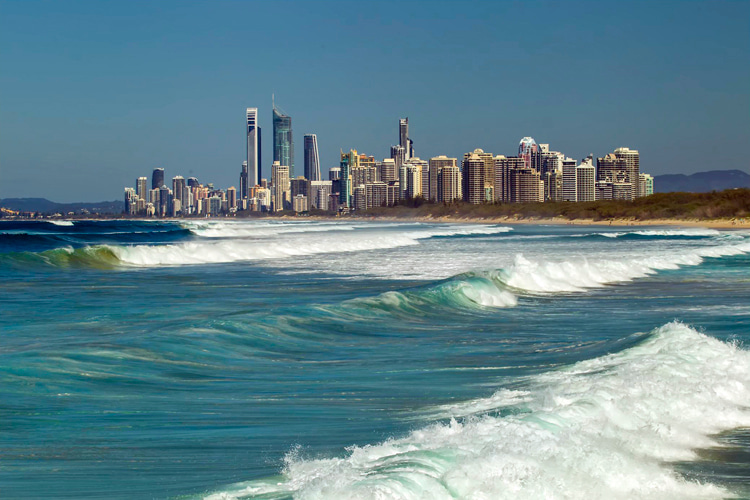
A World Surfing Reserve as Neighbor
As Surfers Paradise has grown, it has faced numerous challenges in maintaining its identity as a beach and surf destination.
The construction of high-rise buildings and the increasing number of visitors has led to concerns about overcrowding, environmental degradation, and the loss of the laid-back, surf-centric atmosphere that originally defined the area.
To address these challenges, the city has implemented various measures to preserve its heritage and protect the environment.
The Gold Coast World Surfing Reserve, established in 2016, aims to protect key surf breaks along the coastline and promote responsible surfing practices.
Additionally, the town has invested in sustainable tourism and infrastructure development, including improved public transportation, beach nourishment projects, and initiatives to minimize waste and pollution.
Moreover, Surfers Paradise has continued to invest in its beach culture and support local surf clubs and schools.
These efforts have helped maintain the city's status as a premier surfing destination while ensuring that future generations can enjoy the same pristine beaches and perfect waves that originally attracted surfers to the area.
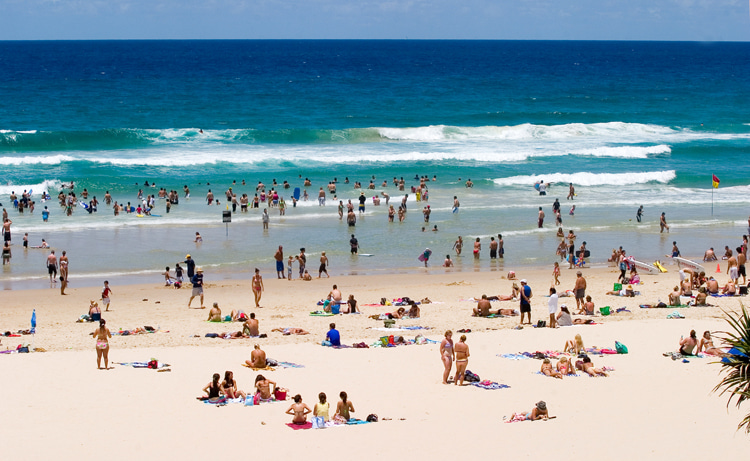
The Legacy of the Name
The name "Surfers Paradise" is more than just a catchy moniker for a city; it represents the origins, spirit, and identity of a place that has captured the hearts of surfers and beach enthusiasts for nearly a century.
It is a testament to the vision of Jim Cavill, who saw the potential in a small coastal town and transformed it into a renowned destination for sun, sand, and quite a few fun beach breaks.
As Surfers Paradise continues to grow and adapt to the changing world, its name serves as a reminder of the city's roots and its enduring connection to the ocean and the waves.
The story behind the name highlights the importance of preserving the unique culture and environment that make it a true paradise for surfers and beach lovers alike.
